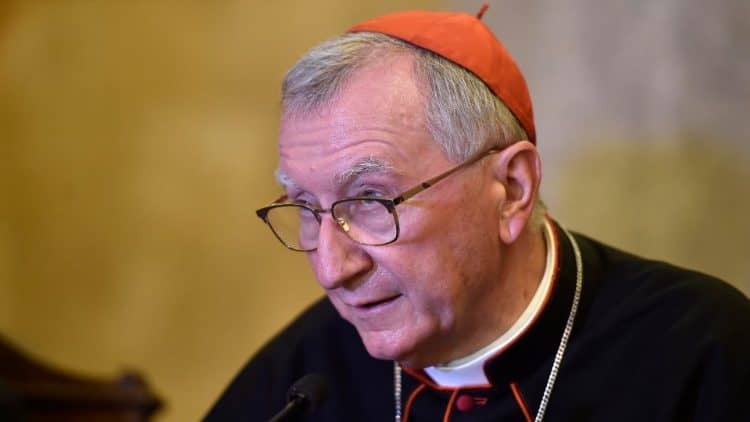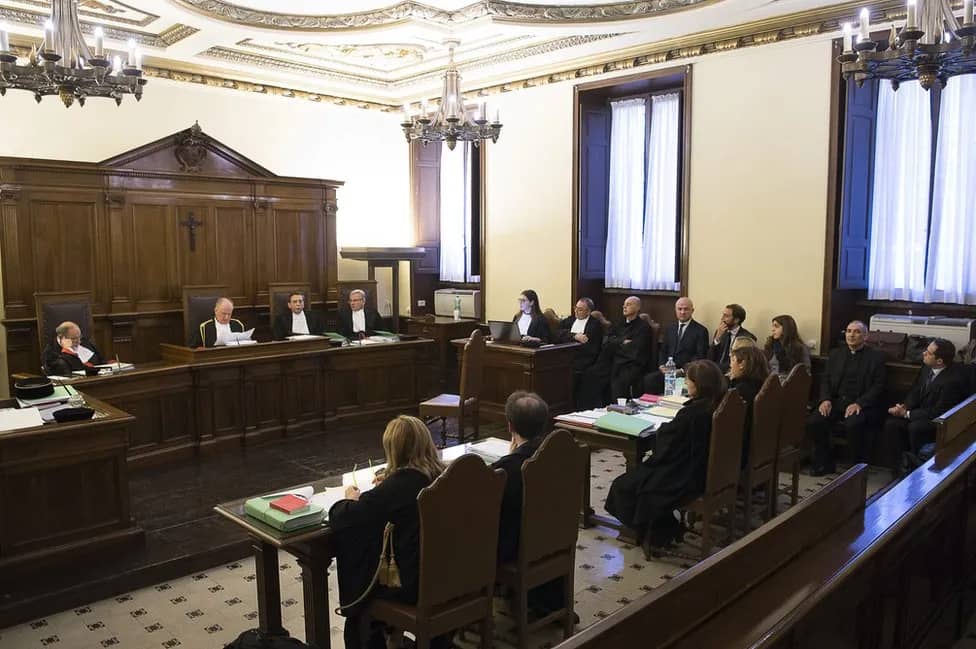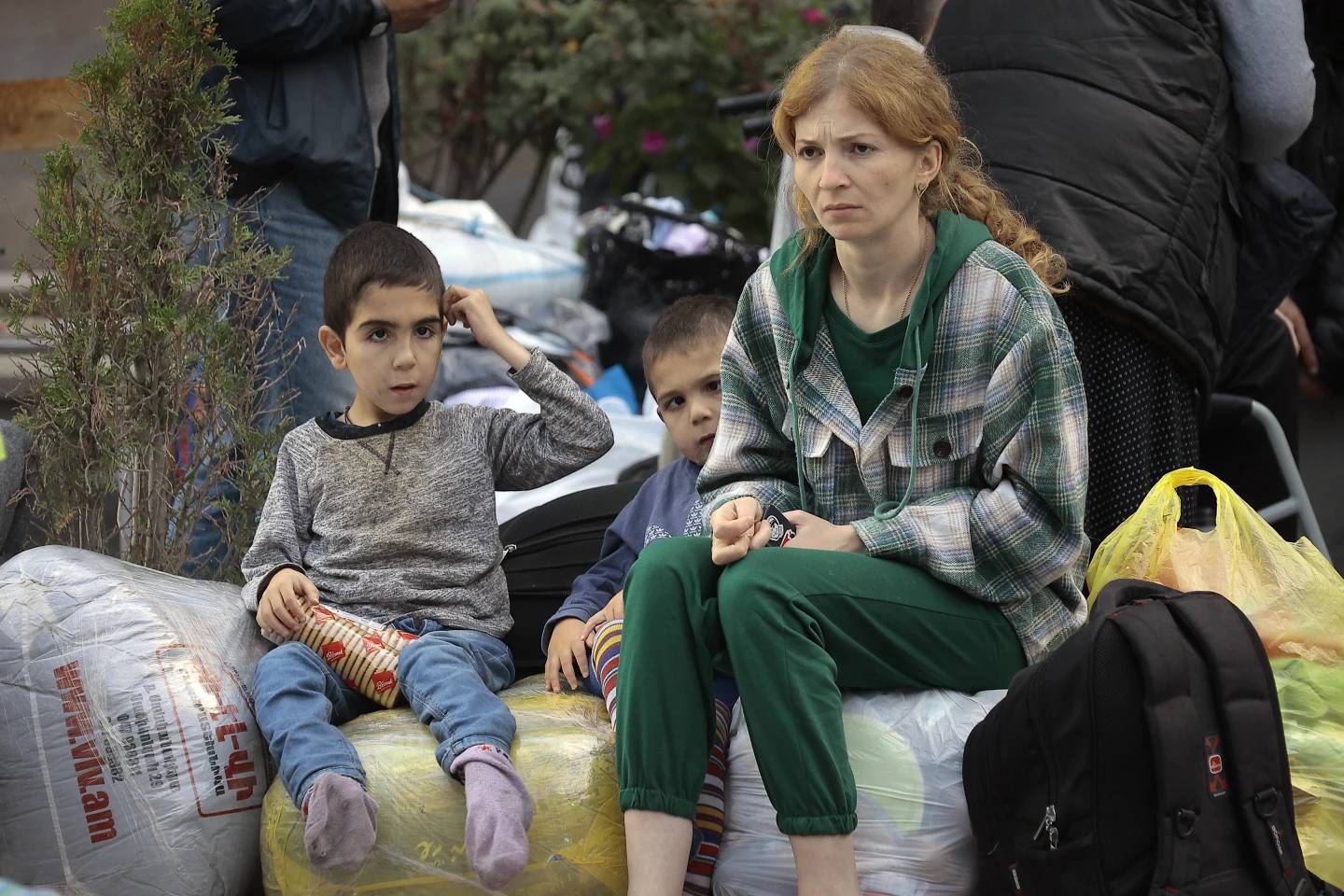ROME— In the Pope Francis era, the pontiff exiting the Vatican to go someplace across town has become commonplace, always adding unplanned complications to Rome’s already chaotic traffic. Yet every December 8, Romans know that things will be even worse than usual in the Eternal City’s downtown area.
Maintaining a tradition that began in 1953, Pope Francis today will head to the Piazza Mignanelli, towards the south-east extension of the recently-renovated Spanish Steps, where the Column of the Immaculate Conception stands tall.
Once there, surrounded by thousands of locals and curious bystanders, the pope will bless a crown of flowers that will be hung around the right arm of the image of the Virgin by the head of the Italian fire department, who’ll use the ladder of a fire truck to get up there.
Traditionally, the bouquet has the Latin motto “Flammas domamus, donamus Corda,” which in English means, “We stop fires, giving our hearts.”
A second flower arrangement, with the “SPQR” label, will be placed on the bottom of the statue, that has been in this square since 1857, three years after Pope Pius IX proclaimed the dogma of the Immaculate Conception.
“SPQR” are the initials of the Latin expression Senatus Populusque Romanus, which dates back to the time of the Roman empire, and which in English translates to, “the Roman Senate and People.”
The Immaculate Conception
The Immaculate Conception of the Virgin Mary has been marked in one way or the other through the centuries. The first moves to declare the conception of the Mother of God to be immaculate came in the eighth century, but it wasn’t until 1854 that Pope Pius IX formally declared it a dogma, meaning its acceptance is a necessary belief of all Catholic faithful.
“The most Blessed Virgin Mary was, from the first moment of her conception, by a singular grace and privilege of almighty God and by virtue of the merits of Jesus Christ, Savior of the human race, preserved immune from all stain of original sin,” is what the 1854 ex cathedra proclamation says.
Put in very simple terms, it means that according to Catholic teaching, Mary never sinned and that she was redeemed from sin from the moment she was conceived.
According to tradition, the Virgin herself confirmed this dogma four years later, when she appeared in the small French town of Lourdes. When 14-year-old Bernadette Soubirous, prompted by the local bishop, asks the woman she saw to introduce herself, Mary allegedly said, “I’m the Immaculate Conception.”
The Immacolata feast has such importance in Italy that it’s actually a public holiday. In most countries, however, including the United States, it’s not. Yet on the Catholic calendar it’s a holy day of obligation, meaning Catholics are supposed to go to Mass.
Pope Francis and Marian devotion
Francis’s love affair with Our Lady is well documented.
From his yearly attendance to Argentina’s massive pilgrimage to the shrine of Our Lady of Lujan, patroness of the pope’s country, when he was in Buenos Aires, to his regular visits to Rome’s Basilica of St. Mary Major to venerate the famous icon of Our Lady known as Salus Populi Romani (protectress of the Roman people), Francis demonstrates his devotion.

Earlier this year, when he made a politically-charged trip to Mexico, visiting Ciudad Juarez on the border with the United States, delivering a strong appeal in favor of immigrants, he said time and time again that he had to make the trip to visit Our Lady of Guadalupe, patroness of the Americas, and that everything else was decided after.
“How could I not come?” Francis asked the Mexican bishops when he met with them. “Could the Successor of Peter, called from the far south of Latin America, deprive himself of seeing la Virgen Morenita?”
In 2013, soon after his election, he changed the already planned trip to Brazil, to participate in World Youth Day in Rio de Janeiro, to include a day-trip to the city home of the shrine of Our Lady of Aparecida.
Francis has spoken about how his devotion to Mary helped him through his election to the papacy, about praying the Rosary three times a day, and he always makes a point of stopping and even presenting flowers at the feet of Our Lady when she’s in St. Peter’s Square or wherever he celebrates Mass during his trips abroad.
During his visit to Poland last July, he tripped and almost fell while celebrating Mass at the Jasna Gora monastery, in Czestochowa. Speaking to journalists on the flight back, he said he was simply “looking at the Madonna, and I forgot about the step.”

He even gave up TV in 1990 because of a promise he made to the Virgin of Carmel.
Francis has spoken about Mary on countless occasions, and she was at the center of one of the few “major events” held in Rome during the Holy Year of Mercy, which closed on November 20, 2016 and which he’d opened on December 8 in 2015.
Yet the pope’s devotion to the Mother of God wasn’t always as strong as it is now, but actually developed through the years, with two events in the 1980s marking him in particular.
In 2005, after the death of St. John Paul II, then-Cardinal Jorge Mario Beroglio wrote a testimony for a special issue of the Italian magazine 30 Giorni, dedicated to the late pontiff. In it, the man who today leads the Church wrote about once praying the rosary with the Polish pope and the impact it had on him.
“If I remember well, it was 1985. One evening I went to recite the holy Rosary that was being led by the Holy Father. He was in front of everybody, on his knees,” Bergoglio writes.
“The group was numerous; I saw the Holy Father from the back, and, little by little, I got lost in prayer. I was not alone: I was praying in the middle of the people of God to which I and all those there belonged, led by our pastor.”
It’s unclear, from the original text, if this took place during John Paul’s 1982 trip to Argentina, or in some other place in 1985. Yet the where and when seem to have been secondary for Bergoglio.
“I felt that this man, chosen to lead the Church, was following a path back to his Mother in the sky, a path set out from his childhood,” he wrote. “I understood the presence of Mary in the life of the pope, a witness he never ceased to give. From that moment, I recite the 15 mysteries of the Rosary every day.”
Then there’s his devotion to Mary Untier of Knots, which the still-Father Bergoglio got to know while he was studying in Germany in the late 1980s. The painting, found in the Church of St. Peter am Perlach, in Augsburg, Bavaria, depicts Mary untying a knotted rope while stomping her foot on a serpent.
The message of the painting, allegedly commissioned by a priest as a thank-you gift for what he perceived as a Marian intervention in saving his grandparent’s marriage, is clear: Mary solves problems, heals divisions, and defeats evil.
When he became archbishop of Buenos Aires, he would normally include an Image of the Undoer of Knots in his letters.
He’s spoken about her several times throughout his papacy, for instance in an address he gave in October 2013, during a Marian prayer vigil held in St. Peter’s Square. There, he spoke about Mary’s faith.
“What was Mary’s faith like?” The first characteristic he listed: “Mary’s faith unties the knot of sin.” It is an ancient belief of the Church that the Blessed Virgin Mary untied the knot of disobedience in man’s heart created by Eve’s disobedience.
Timely reminder: Not everything began with Francis
Francis has often been labeled a pope of firsts, and in many situations it’s true: He’s the first pope of the global south, he’s the first one to use the word “gay,” he was the star of the first papal selfie and the first to live out of the Vatican’s apostolic palace since it was built, many moons ago.
Yet he’s far from being the first pope with a strong Marian devotion.
Even going back only to Pope Pius IX proclaiming the dogma of the Immaculate Conception in 1884 seems like laziness, when examples abound.
In the 431 Council of Ephesus, she was proclaimed Mary Theotokos, Mother of God, which designated the Virgin as the “conqueror of all heresies.” Then there’s also the ancient formula De Maria nunquam satis, meaning “concerning Mary one can never say enough.”
John Paul II’s papal motto was in fact dedicated to her: Totus tuus [Maria], and he had an image of the Virgin placed in St. Peter’s Square. (The phrase is drawn from the spiritual writings of St. Louis de Montfort, a 17th/18th century French Catholic priest and confessor.)
Benedict XVI, like his predecessor, practically traveled the world visiting Marian Shrines, going to Fatima, Lourdes, Loreto and Aparecida. In 2010, when visiting Fatima, in Portugal, he even lauded the “maternity of God” as a counter-sign to egoism, referring to Mary’s role as the Mother of God.
In his 1984 interview book with Italian Journalist Vittorio Messori, The Ratzinger Report, then Cardinal Joseph Ratzinger described Mary as a “remedy” that has “concretely shown its effectiveness though the centuries” and listed “six reasons for not forgetting” her.
Pope Pius XII had five encyclicals dedicated to Mary, such as Ad Caeli Reginam, from 1954, through which he established the feast Queenship of Mary. In Ingruentium malorum, he strongly supported the idea that Catholic families should pray the rosary together and he entrusted to her the destiny of humanity.
The challenge, in fact, would be to find a pope who didn’t add his drop of water to the ocean that is Mariological papal teaching.
Francis wears his love for the Mother of God on his sleeve, yet his acts of popular devotion don’t overrule his predecessors’ encyclicals, apostolic exhortations, ex cathedra proclamations and papal bulls about the most important woman of the Catholic faith.
















